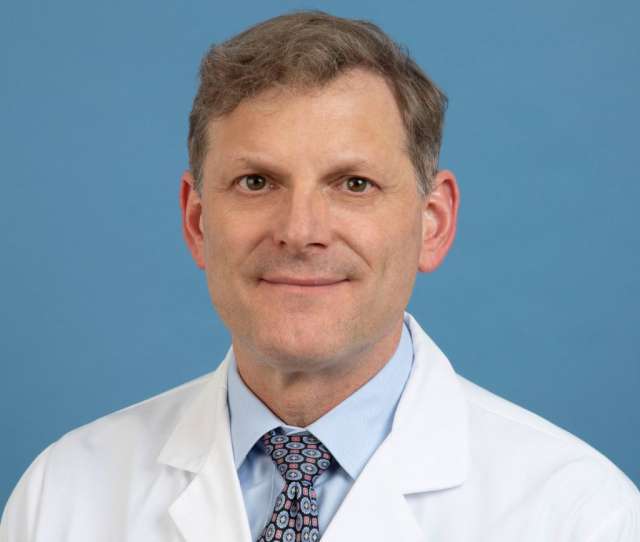When treating a stroke – a disruption of blood flow to the brain – doctors race against time to stop the attack fast, preserving as many brain cells as possible.
Once the immediate emergency has been resolved, however, another phase of treatment begins: Now the goal becomes helping the patient recover any physical function that may have been lost.
UCLA stroke neurologist Steven Cramer, MD, works with patients to help them regain their abilities. “In particular, we focus on the return of arm movement,” he says. “Arm movement is a big part of what makes us human.”
Restoring arm movement requires building new connections in the brain, to replace the damaged ones. “We’re trying to rewire the brain,” says Dr. Cramer, the Susan and David Wilstein Chair in Rehabilitation Medicine. “If I handed you a French horn and asked you to play, you’d need to work on it every day, an hour a day, for weeks, but people aren’t getting the equivalent of that when it comes to stroke rehabilitation.”
Stroke patients typically spend less than a week in the hospital, after which some go to residential rehab centers, some move to nursing care facilities, and about half return home. At home, patients don’t have access to daily, therapist-led exercises designed to build new motor skills.
For the past five years, Dr. Cramer has been running trials to test the benefits of intense “telerehabilitation” for stroke patients. In one recent study, over a period of six weeks, the patients had 36 arm therapy sessions, 70 minutes each, consisting of interactive computer-based games and exercises. Half of the sessions were supervised by a licensed therapist via teleconference. The games involve enjoyable play behavior during which the subject is performing rehabilitation therapy, while the exercises involve repeated movements to improve strength.
When Dr. Cramer compared the high-intensity home-based program with the best available in-clinic rehab programs, “both groups did spectacularly well” in terms of arm movement gains, he says.
Simply being able to move your arms isn’t good enough, though, if you want to return to work or perform household tasks such as cooking or dressing yourself.
“People appreciate getting arm movement back, but at the end of the day, what really matters is, are they more functional?” Dr. Cramer says. “Is the disability reduced?”

Dr. Cramer and his colleagues recorded each patient’s level of disability using a standardized scale that tests how independently people can do the tasks needed to get through the day, such as eating or getting dressed . They found that 1 in 3 people who completed six weeks of this daily, in-home telerehabilitation improved measurably on the disability scale.
Conducting physical rehab in patients’ homes has multiple benefits, Dr. Cramer says.
“Being in the home not only offers convenience, but it also fosters functional applications of new movement gains,” he says. “When patients do their rehabilitation therapy at home, they’re more likely to use their new gains when approaching real-world tasks, such as picking up a fork or putting on their socks.”
All the patients in the study had suffered a stroke four to 36 weeks prior to beginning therapy, suggesting that the brain remains able to adapt and form new connections long after the immediate recovery stage.
The researchers hope that studies such as this will help change the standard practice. Most people who recover from stroke in the U.S. receive no outpatient therapy, and even for those who do receive some therapy, it generally lasts only a few weeks. This study suggests more patients could improve their ability to perform daily activities if they were offered daily in-home therapy.
“It is a missed opportunity,” Dr. Cramer says.
“This study is one of several that have come out recently that say we’re under-dosing patients, because with rehab, when you give very high doses, you see better behavioral gains,” he says. “The rules need to change to enable more intensive doses of therapy. The current system just isn’t built for doing what we’ve described here, and to fix it scientists need to persuade insurance companies through studies such as this one.”
For more information about Dr. Cramer’s work go to https://pubmed.ncbi.nlm.nih.gov/31233135 and https://pubmed.ncbi.nlm.nih.gov/33589538/
Learn more about Recovering from a Stroke from the UCLA Stroke Center.
Caroline Seydel is the author of this article.




